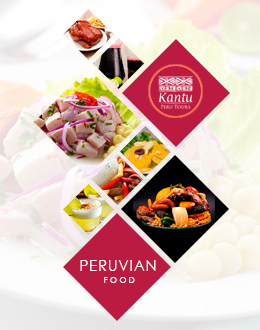Experiential Tourism in Cusco | Everyting to immerse yourself in the Andean Culture
Experiential tourism in Cusco is an authentic adventure that allows you to live like a local, interact with Indigenous communities, and take part in their ancient traditions. Beyond Machu Picchu, Cusco is a treasure trove of culture, history, and connection with nature. This activity invites you to become part of daily life in Andean villages, learning their customs, cuisine, and spirituality. Therefore in this guide, we’ll share the best destinations, activities, tips, and how to get there. Keep reading and prepare for an unforgettable experience with Kantu Peru Tours!
What is Experiential Tourism in Cusco?
Unlike conventional tourism, experiential tourism in Cusco focuses on direct interaction with rural communities. You won’t just visit places—you’ll:
→ Live with local families in their adobe homes and learn their language (Quechua).
→ Participate in daily activities, such as farming, weaving, and traditional cooking.
→ Discover Andean cosmovision, including rituals honoring Pachamama (Mother Earth).
→ Contribute to sustainable development, as tourism directly benefits local families.
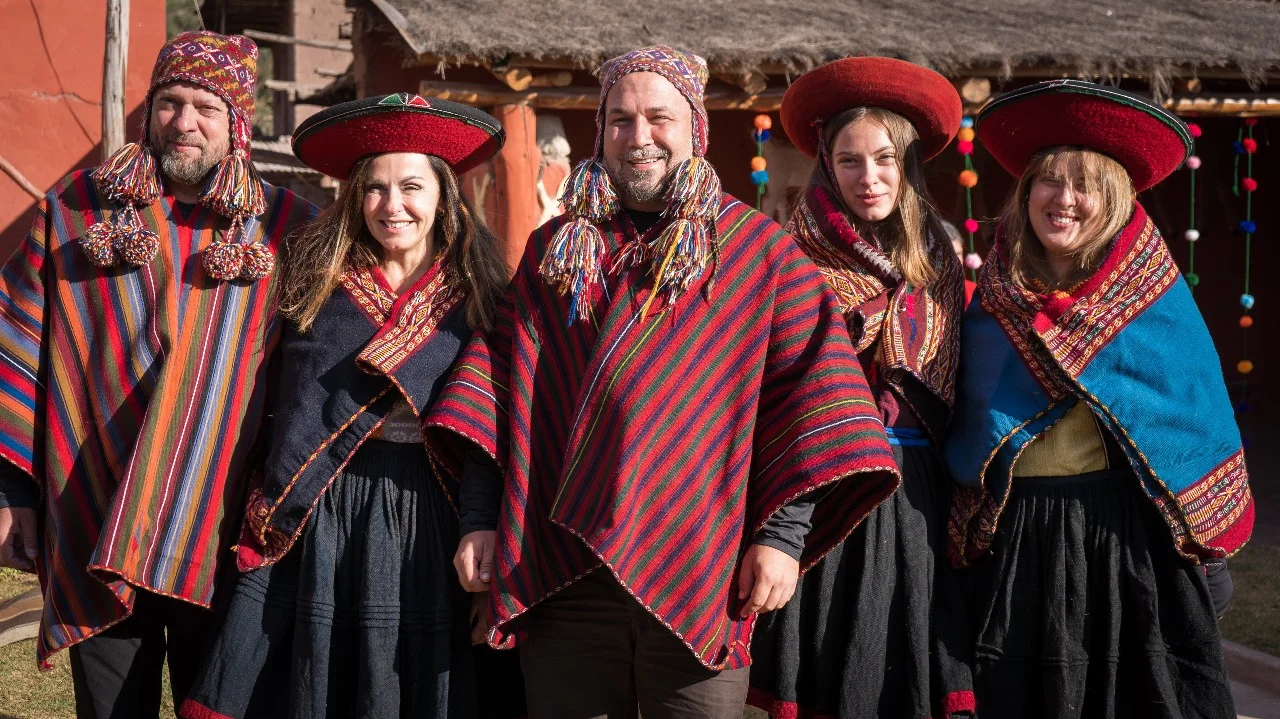
A photo of a family doing experiential tourism in Chinchero
The best destinations to experience Andean Culture
Experiential tourism in Cusco takes you beyond traditional routes, immersing you in villages where time seems to stand still. These communities, guardians of ancestral traditions, open their doors to share their way of life, customs, and deep connection with the land. If you’re looking for an authentic experience, these are the places you can’t miss:
1. Huilloc Community in Ollantaytambo
Just 1.5 hours from Ollantaytambo, Huilloc is a hidden gem where the descendants of the Incas proudly preserve their identity. Here, women wear vibrant awayos (traditional shawls), and men don hand-knitted chullos, each design carrying unique symbolism.
→ Learn to weave as their ancestors did, using alpaca wool and natural dyes.
→ Take part in potato planting with the chaquitaclla, an ancient Inca farming tool.
→ Share a pachamanca (earth-cooked meal) while listening to local legends.
💡 Did you know? In Huilloc, the colors in their textiles aren’t just decorative—they represent their worldview, with symbols of nature and sacred mountains.
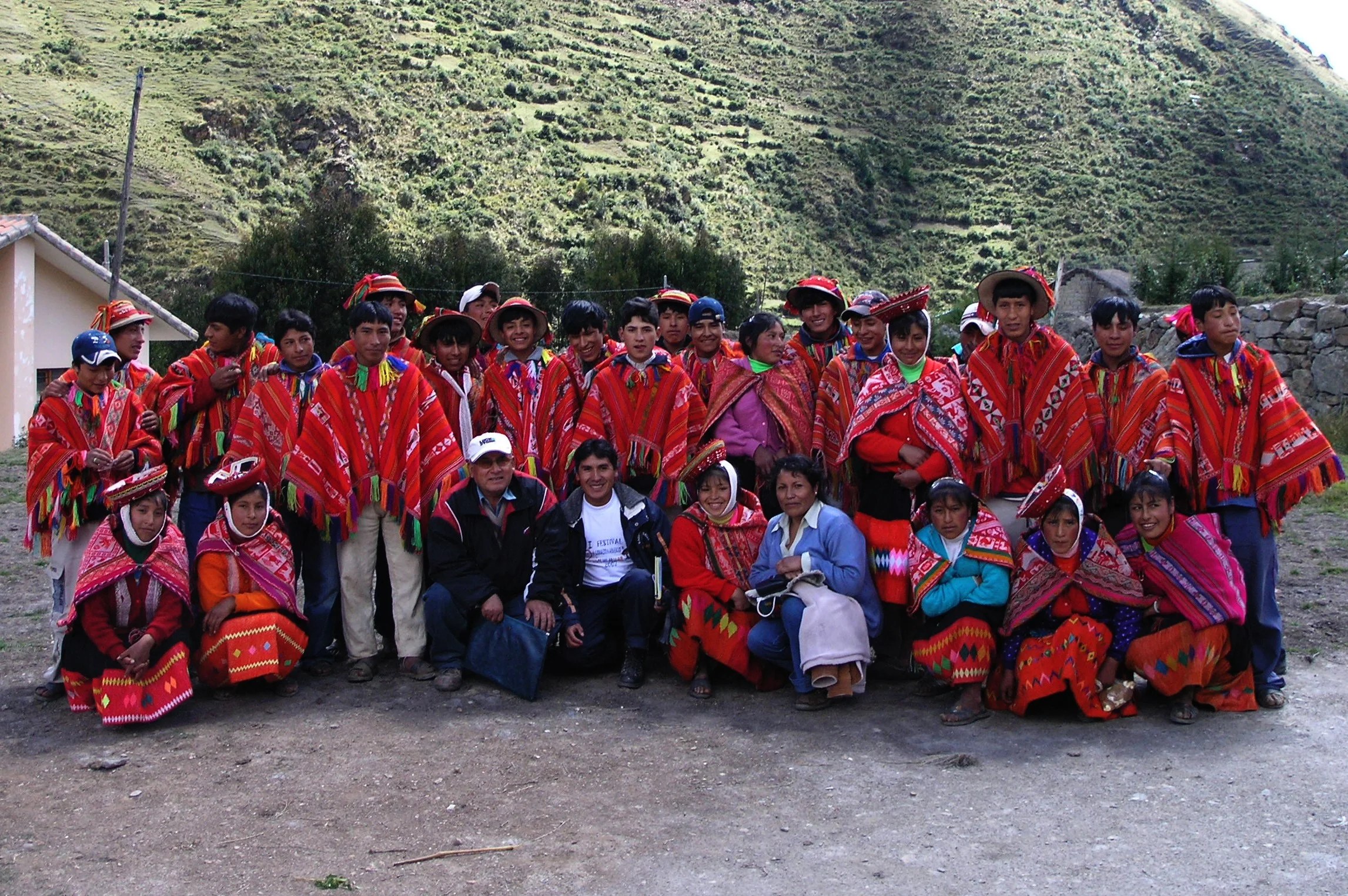
Jóvenes de la comunidad de Patacancha en Ollantaytambo
2. Chinchero, Where the Rainbow Became Textiles
Located 40 minutes from Cusco, Chinchero offers an experiential tourism that feels like stepping into a painting: adobe houses, terraced fields, and skies painted with colors at sunset. But the true highlight is its people, especially the master weavers who keep the art of backstrap loom weaving alive.
→ Discover the secret of natural dyes: Participate in a workshop using cochililla (a natural dye from insects).
→ Explore the Sunday market, where bartering still exists, and try roasted guinea pig.
→ Join a Pachamama offering, a ritual giving thanks for the harvest with flowers.
💡 Fun fact: Chinchero is one of the last places where barter (trueque) is still practiced. Farmers trade potatoes for corn and quinoa for beans, sustaining a solidarity-based economy.
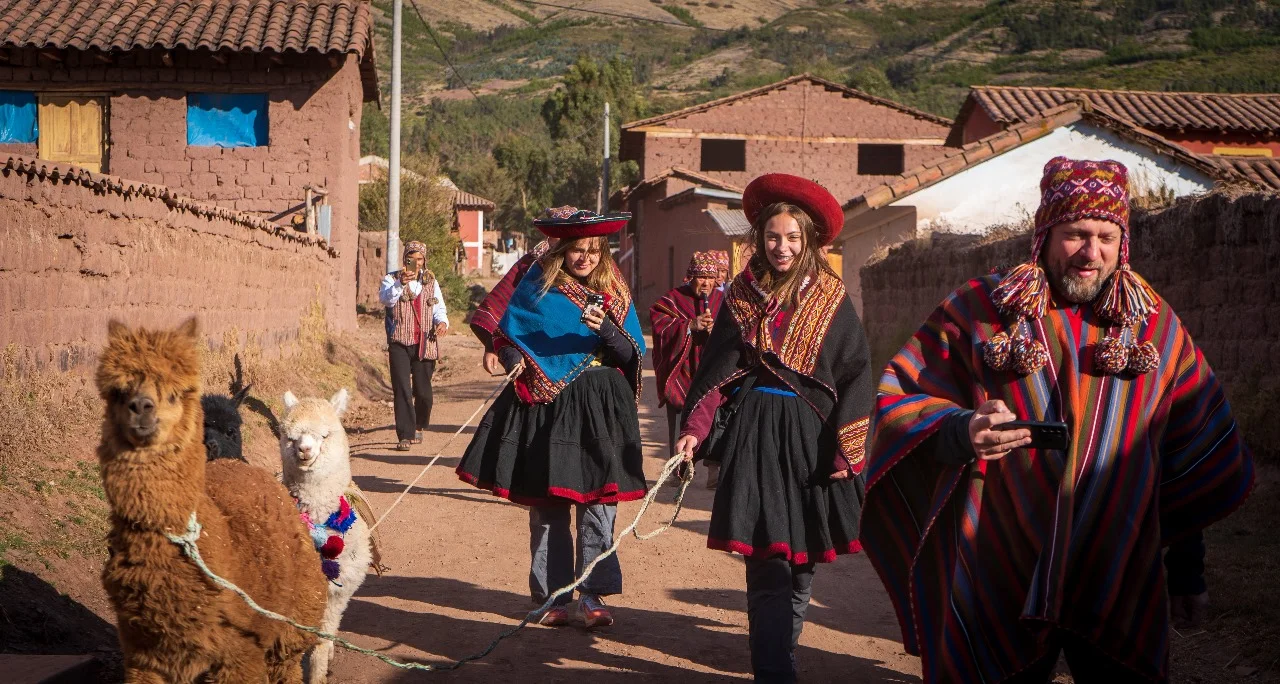
A family holding llamas as part of experiential Tourism
3. Maras and Moray, Where Agriculture is an Art
Just an hour from Cusco, these two sites are a journey into the Inca past. Moray, with its mysterious circular terraces, was an agricultural laboratory. Maras, with its thousands of salt pools, is a dazzling white spectacle under the Andean sun.
→ Walk on sacred land: In Moray, plant quinoa or corn using Inca techniques.
→ Become a “salt harvester” for a day: In Maras, collect salt with local families.
→ Brew chicha de jora: Ferment this sacred drink, once used in festivals and ceremonies.
💡 A secret of Moray: The Incas used these terraces as a microclimate laboratory. Each level had a different temperature, allowing them to cultivate unique plant varieties.
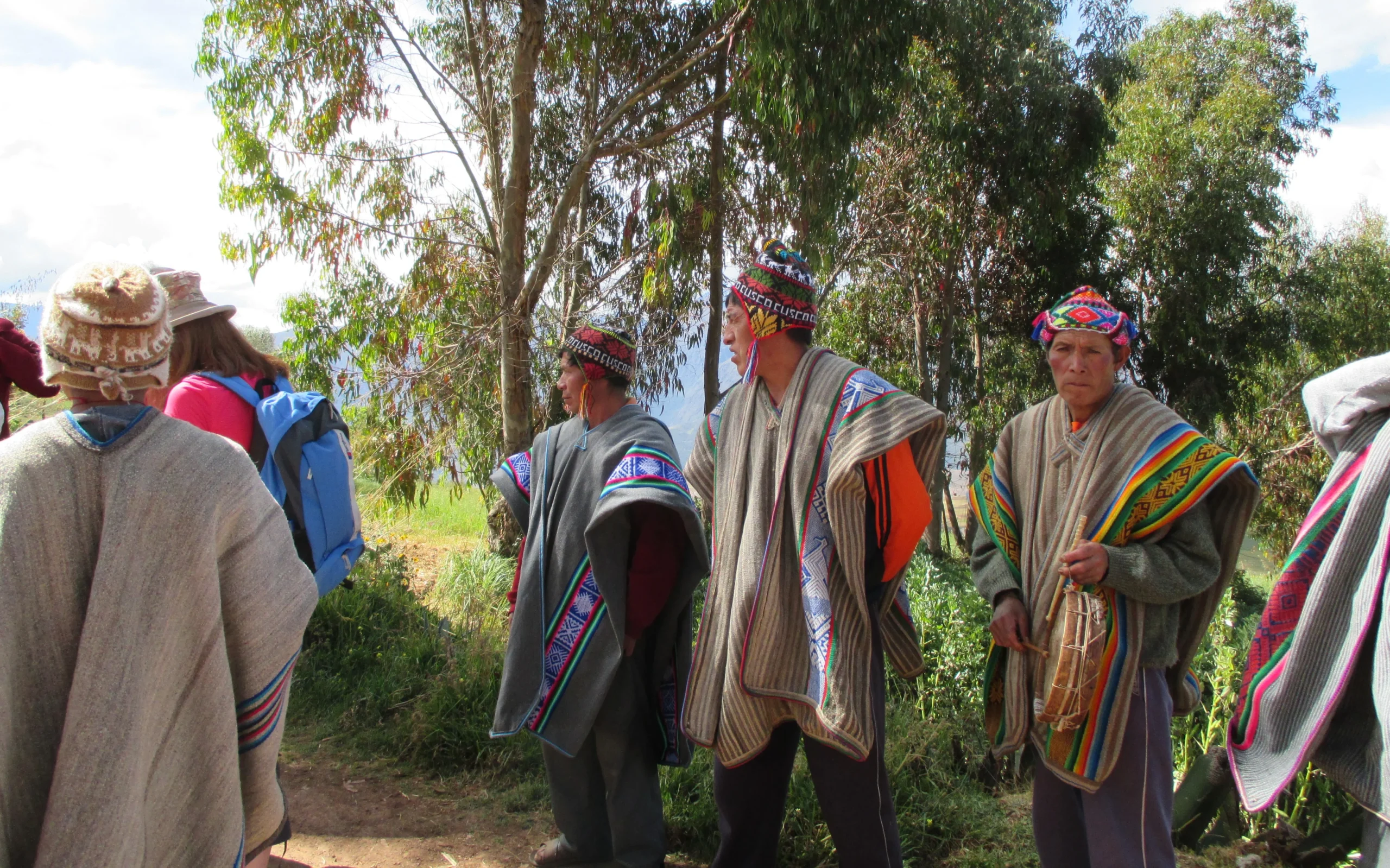
Experiential tourism in Maras Moray
How is the experiential Tourism in Cusco?
1. Live with Local Families
Imagine waking up in a cozy adobe house, smelling firewood burning in the hearth and hearing farm animals in the yard. Staying with a local family is the best way to understand their way of life. You’ll become part of the household—helping prepare breakfast, feeding the animals, and sharing stories under a blanket of stars at night. Did you know many families still speak Quechua in their daily lives? This is your chance to learn some basic words and truly connect with your hosts.
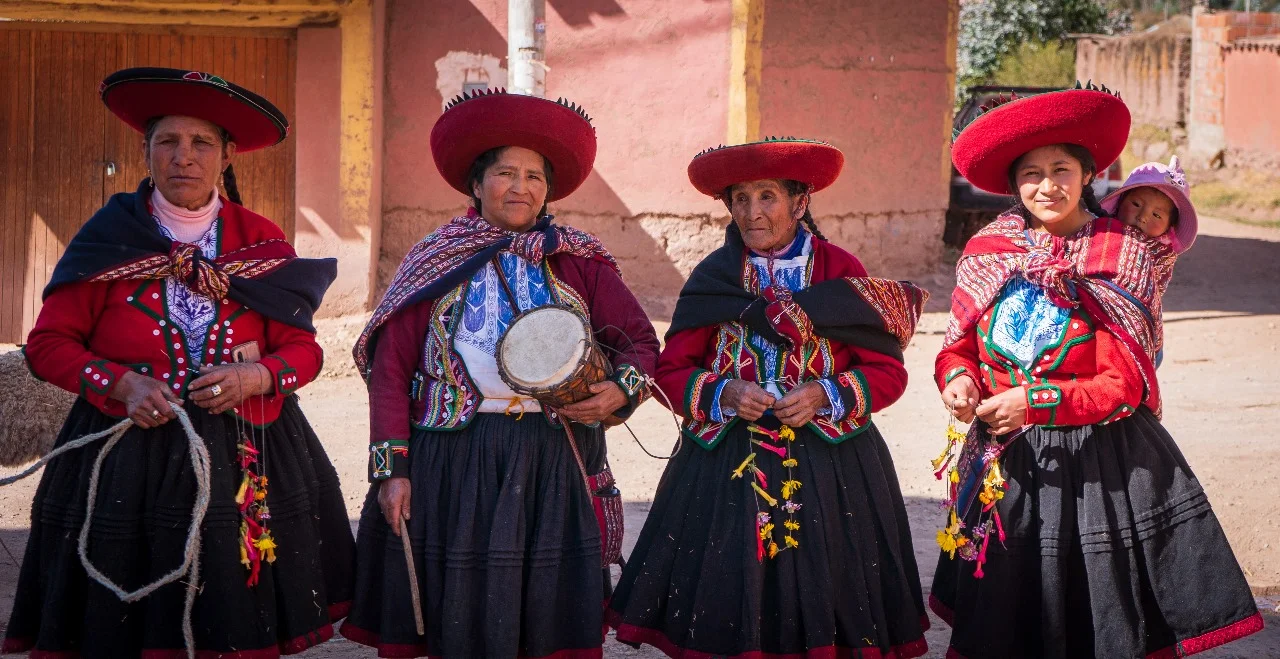
Mujeres en Chinchero que brindan el Turismo Vivencial en Cusco
2. Andean Cuisine & Ancient Gastronomy
In this experience, you won’t just taste delicious dishes—you’ll prepare them with your own hands. Learn to make authentic pachamanca, discovering how food is cooked underground with hot stones. Be amazed as corn transforms into chicha de jora, the sacred Inca drink. And the best part? You’ll enjoy everything you’ve made alongside your new local friends.
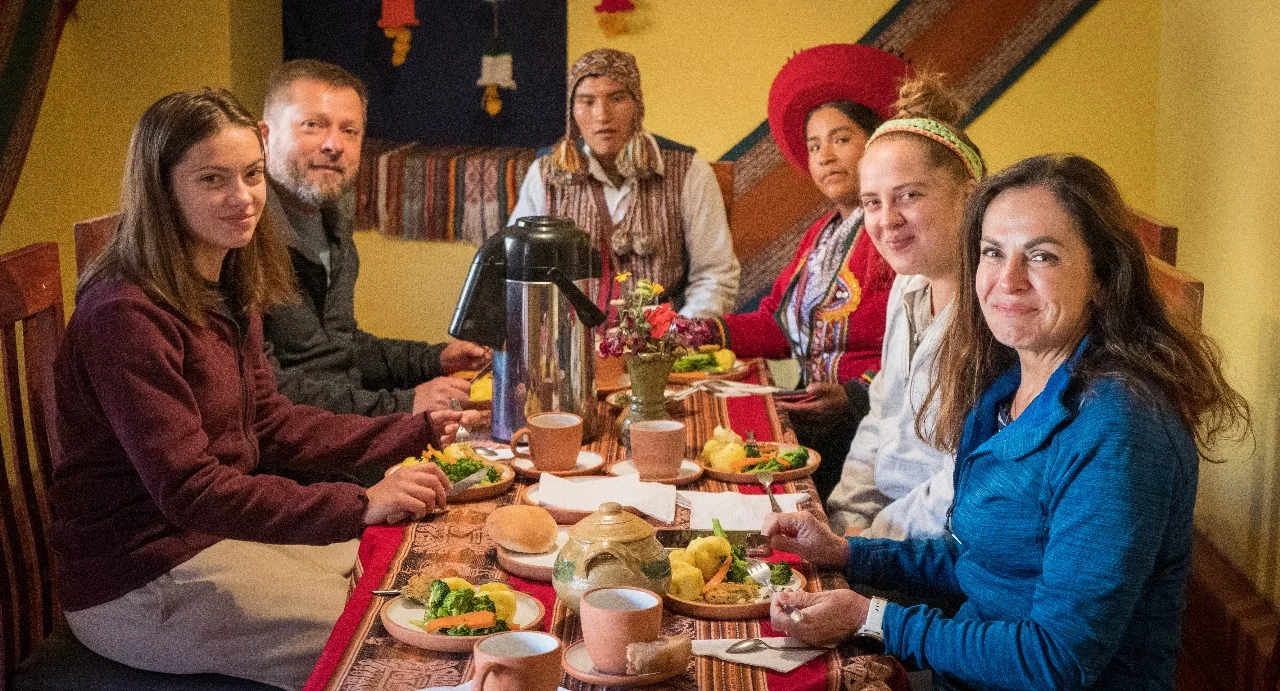
A family doing experiential tourism in Chinchero
3. Ancient Farming Like the Incas
You’ll use traditional tools like the chaquitaclla, the manual plow used by the Incas, natives will teach you how to plant native potatoes following the moon cycles, just as farmers have done for centuries. If you’re lucky, you might even help herd alpacas—those adorable animals so important to local culture. This experience will give you a deep appreciation for working the land.
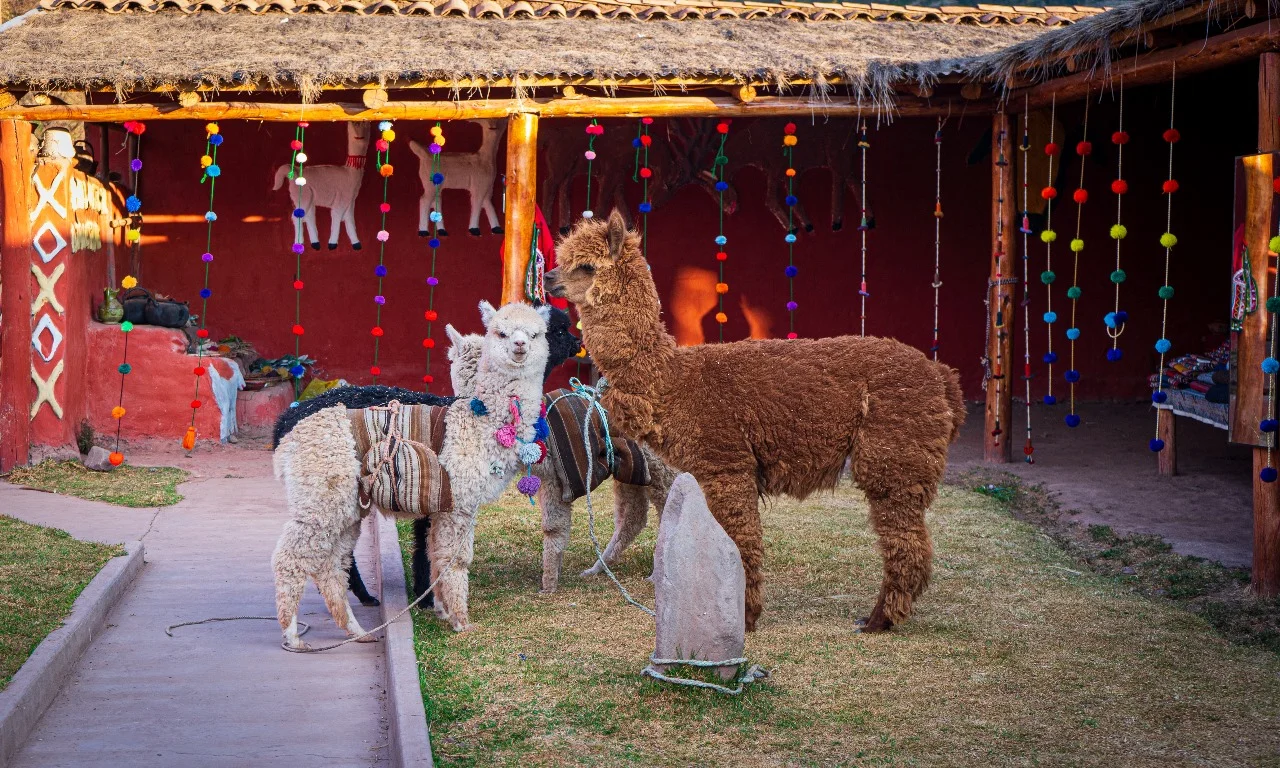
Alpacas in a typical Chinchero house
4. Sacred Andean Spiritual Rituals
Andean cosmology has a unique way of understanding the world, and today, you’ll be part of it. Participate in an emotional Pachamama (Mother Earth) gratitude ceremony, learning the meaning behind each offering. You’ll be fascinated by how coca leaves are used for divination and how medicinal herbs can cleanse your energy. These rituals, passed down through generations, will show you a whole new perspective on humanity’s relationship with nature.
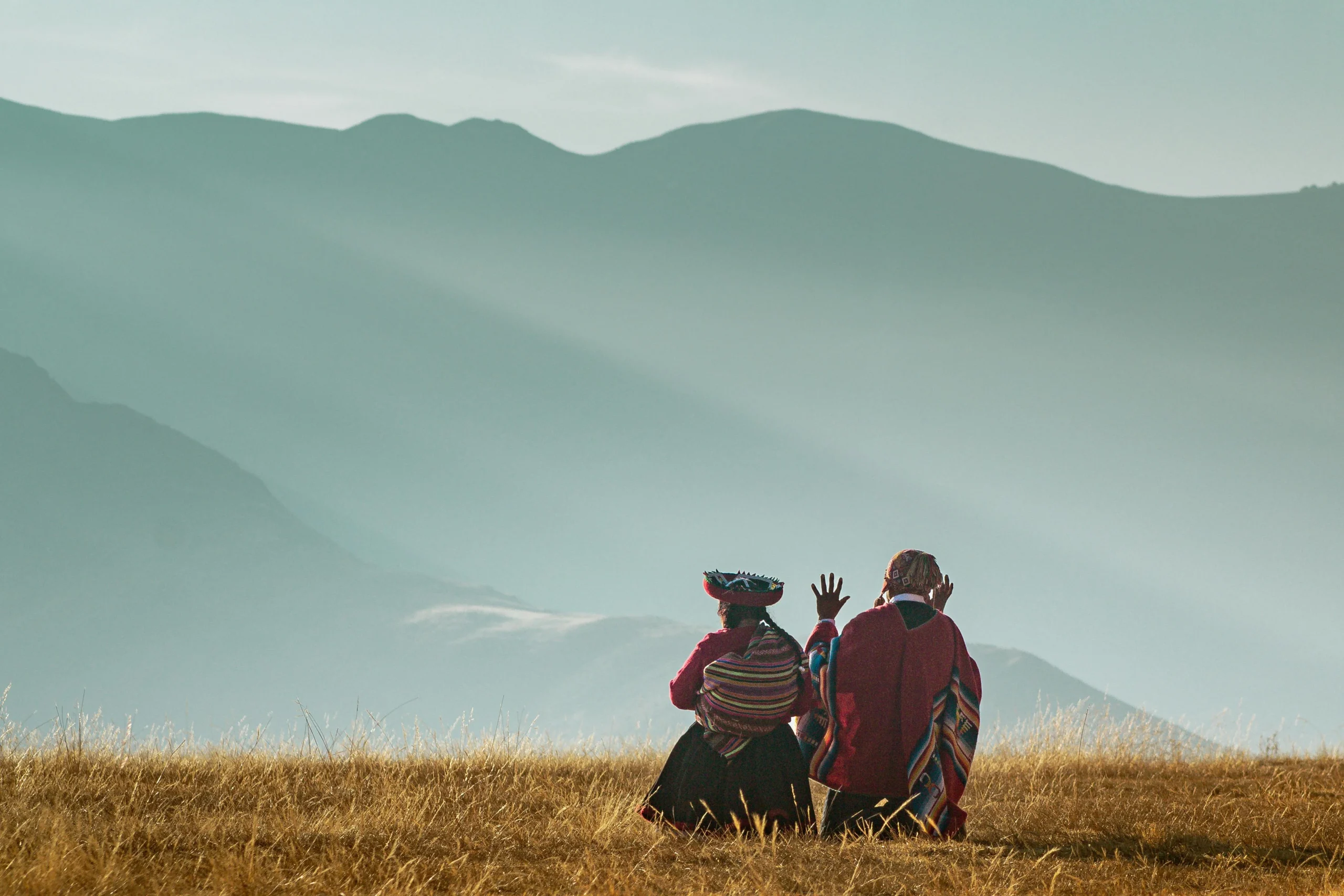
A native couple in the Sacred Valley on the Incas
5. Textile Art & Living Masterpieces
In vibrant weaving workshops, local women will reveal the secrets behind their stunning textiles. You’ll learn to spin alpaca wool, create natural dyes from plants and insects, and maybe even weave your own bracelet with traditional patterns. Every color and design tells a story—ready to discover the message in your creation?
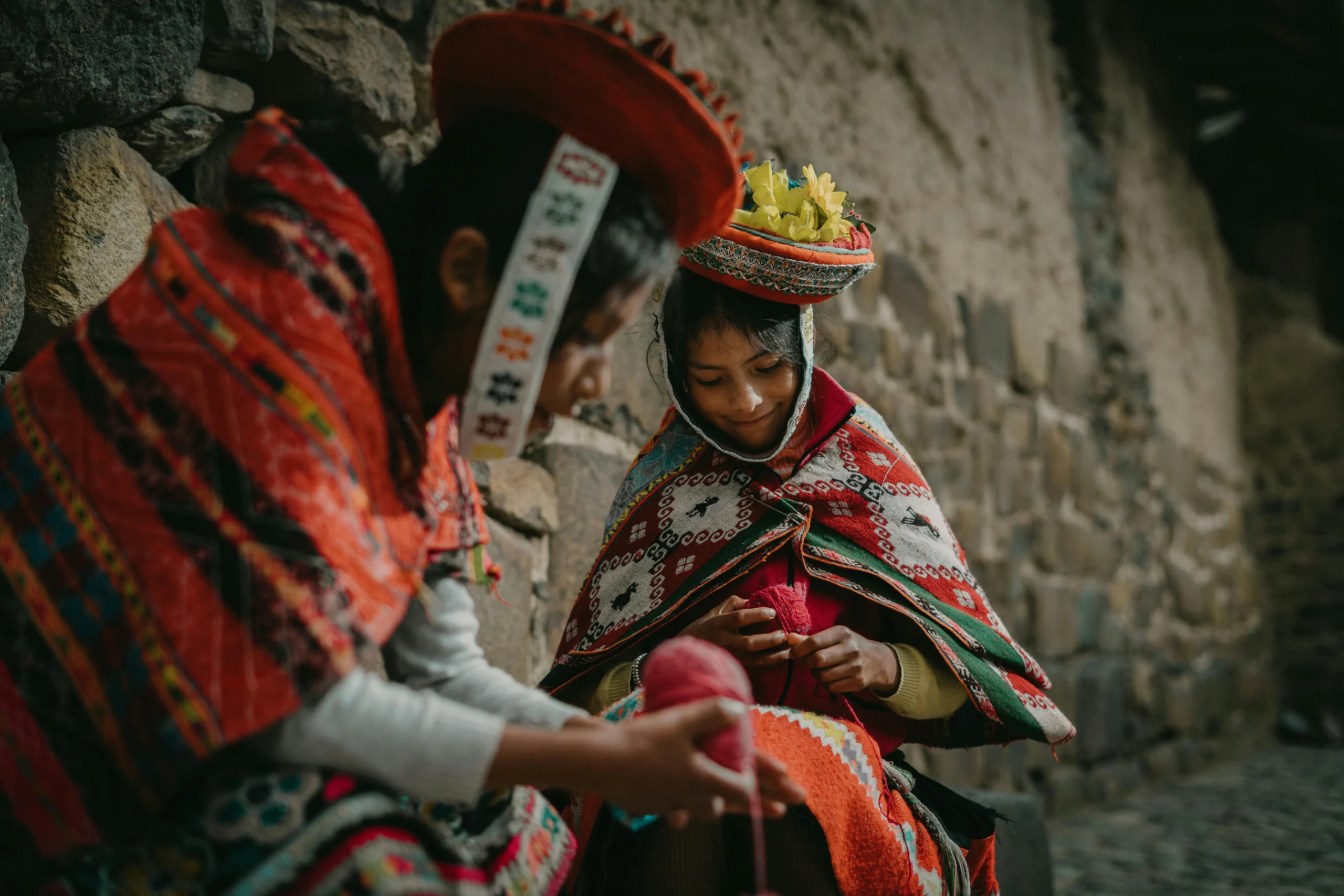
Ladies natrurals from Ollantaytambo weaving
6. The Maras Salt Pans
Prepare for a landscape that feels otherworldly—thousands of salt pools cascading down the mountainside. Here, local families will teach you the ancient art of salt harvesting, just as their ancestors have done since Inca times. You’ll walk among the crystalline ponds and take home some of this famous pink salt, prized for its flavor and mineral richness.
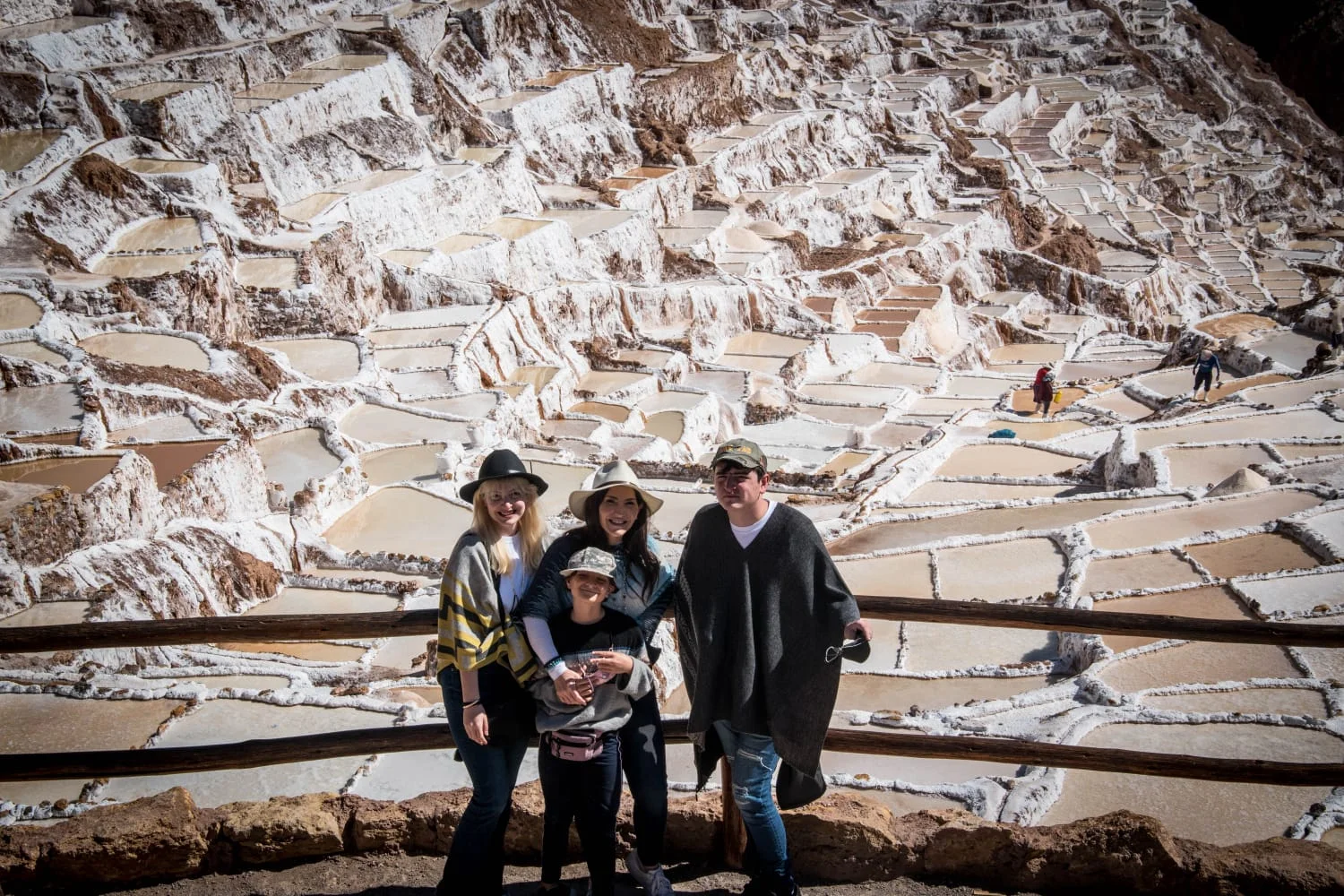
Salineras de Maras-Grupo familiar en tour
How to Get to Cusco’s Experiential Tourism Destinations?
1. Ollantaytambo
1️⃣ From Cusco by bus or colectivo (1.5–2 hrs, S/10–20) – enjoy the Sacred Valley
2️⃣ From the station, walk or take a mototaxi to communities (15–30 min)
3️⃣ Coordinate directly with local families for your immersive experience
2. Chinchero
1️⃣ Public transport from Cusco (40 min, S/3–5)
2️⃣ Sunday market: Perfect for meeting local artisans
3️⃣ Weaving workshops in family-run studios (S/20–50)
3. Maras & Moray
1️⃣ Colectivo to Urubamba (1 hr, S/5), then taxi to Maras (30 min, S/30–50)
2️⃣ Salt pans entrance: S/10
3️⃣ Recommended: Self-guided bike tour from Urubamba
→ Tour operator option (all-inclusive)
1️⃣ Full-day or multi-day excursions (S/120–250)
2️⃣ Includes transport, guide, entry fees + ancestral farming workshops
3️⃣ Complete experience: attractions, lunch, lodging & activities
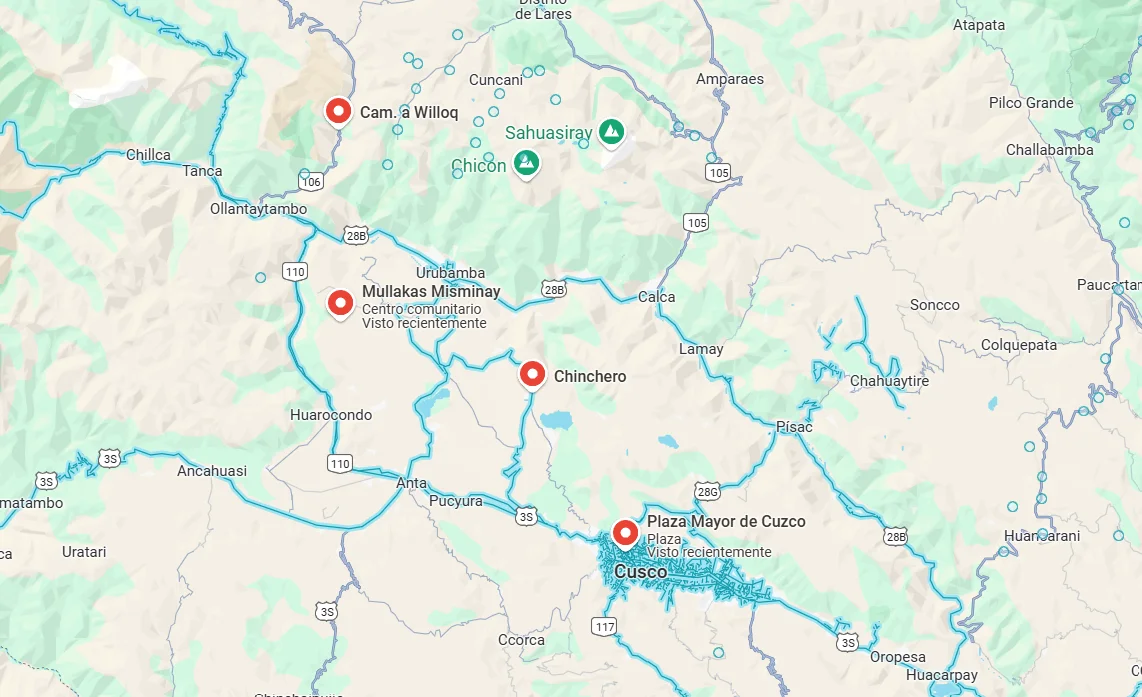
Mapa de los destinos para turismo vivencial en Chinchero
Why choose experiential tourism in Cusco?
Experiential tourism in Cusco offers a real, authentic connection with Quechua communities—direct descendants of the Incas—where 85% of your spending directly benefits host families. This unique experience lets you:
→ Live like a local: Sleep in adobe homes, share meals, and take part in daily traditions.
→ Learn ancestral knowledge: From backstrap loom weaving to Inca farming techniques still used today.
→ Connect with Andean spirituality: Join Pachamama ceremonies and understand their sacred bond with nature.
→ Support real impact: Your visit fosters sustainable development in these communities.
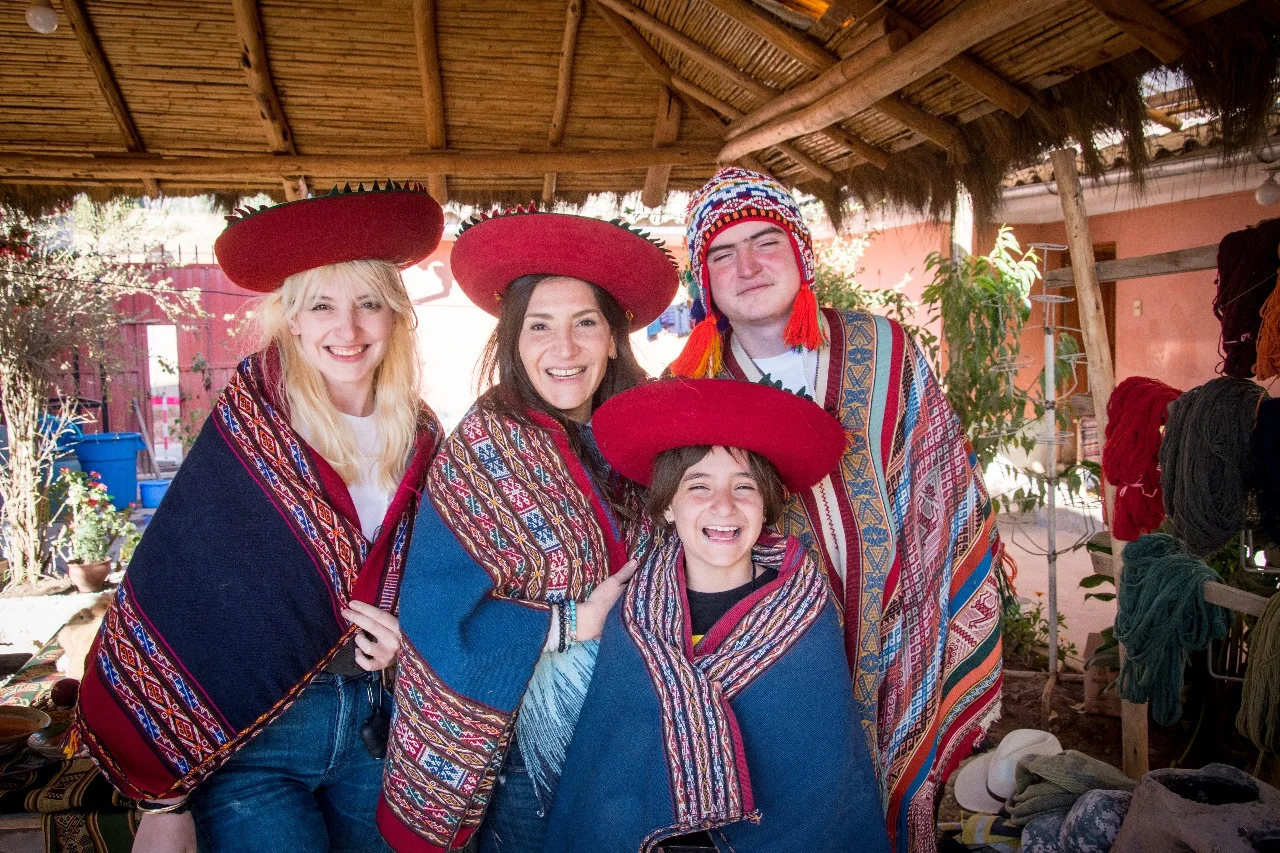
Experiential Tourism in Cusco- Chinchero
Best time for Experiential Tourism in Cusco
Ideal season (April–October):
✔️ Sunny days (15–20°C) & cool nights (0–5°C in June/July)
✔️ Harvest season (May–August)—help gather corn and potatoes
✔️ Traditional festivals like Inti Raymi (June)
✔️ Clear skies for outdoor activities
Rainy season (November–March):
⚠️ Frequent rains (especially Jan–Feb)
⚠️ Some rural paths may be difficult to access
⚠️ Fewer farming activities (planting season)
⚠️ Some communities reduce visitor intake
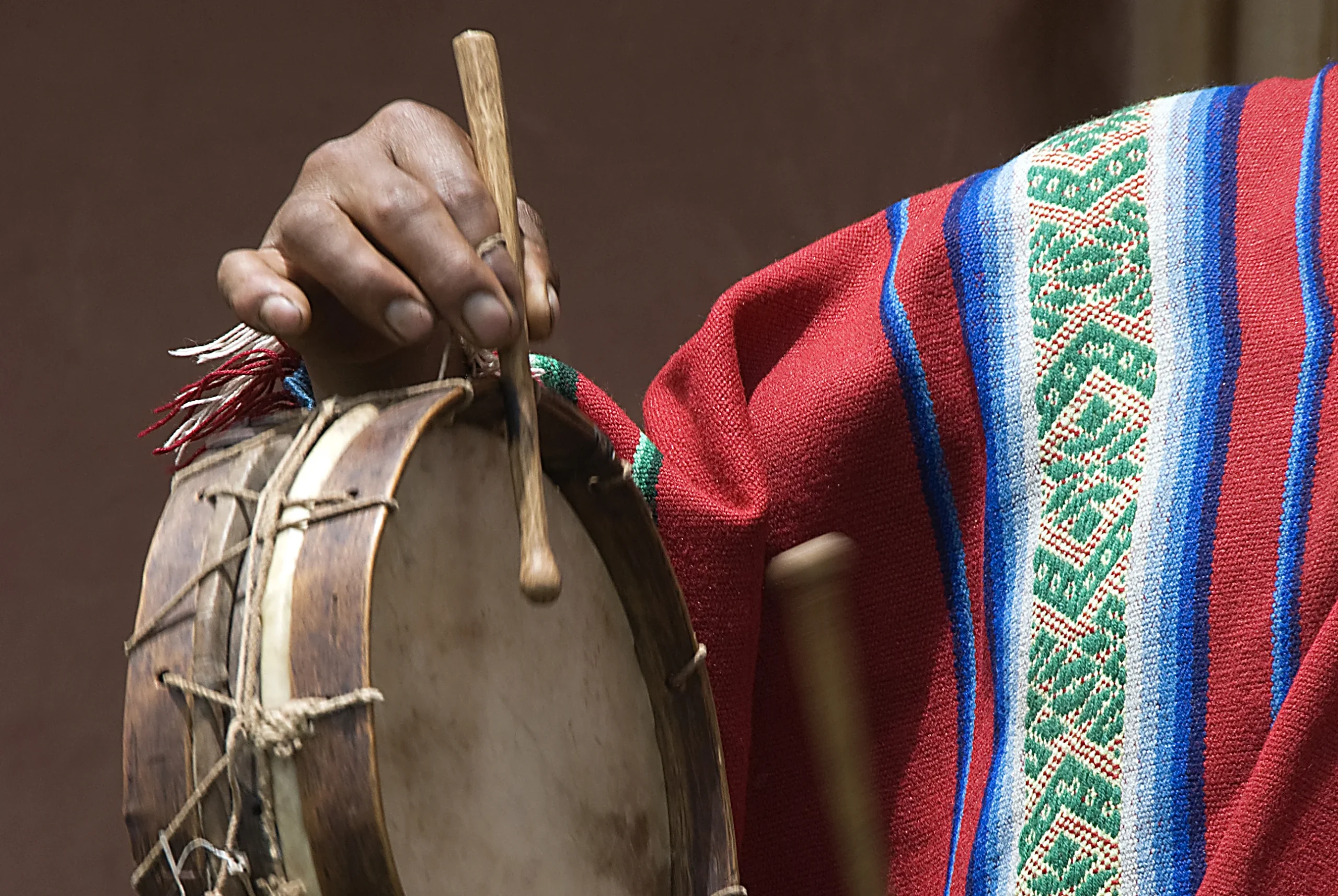
A men playing music in experiential tourism in Cusco
Key recommendations for experiential tourism
For the Traveler: Bring school supplies or seeds as useful gifts, and wear warm, waterproof clothing for the cold weather and rural paths.
Cultural Behavior: Ask for permission before taking photos, follow instructions during ancestral rituals, and avoid haggling, as prices are fair and fixed.
Interaction: Respect local customs, participate humbly in activities, and value the communities’ artisan work.
Physical Preparation: Acclimate to the altitude (3,400 masl), stay well-hydrated, and bring sun protection.
Budget: Carry cash in soles (small bills), as there are no ATMs in the communities and few places accept cards.
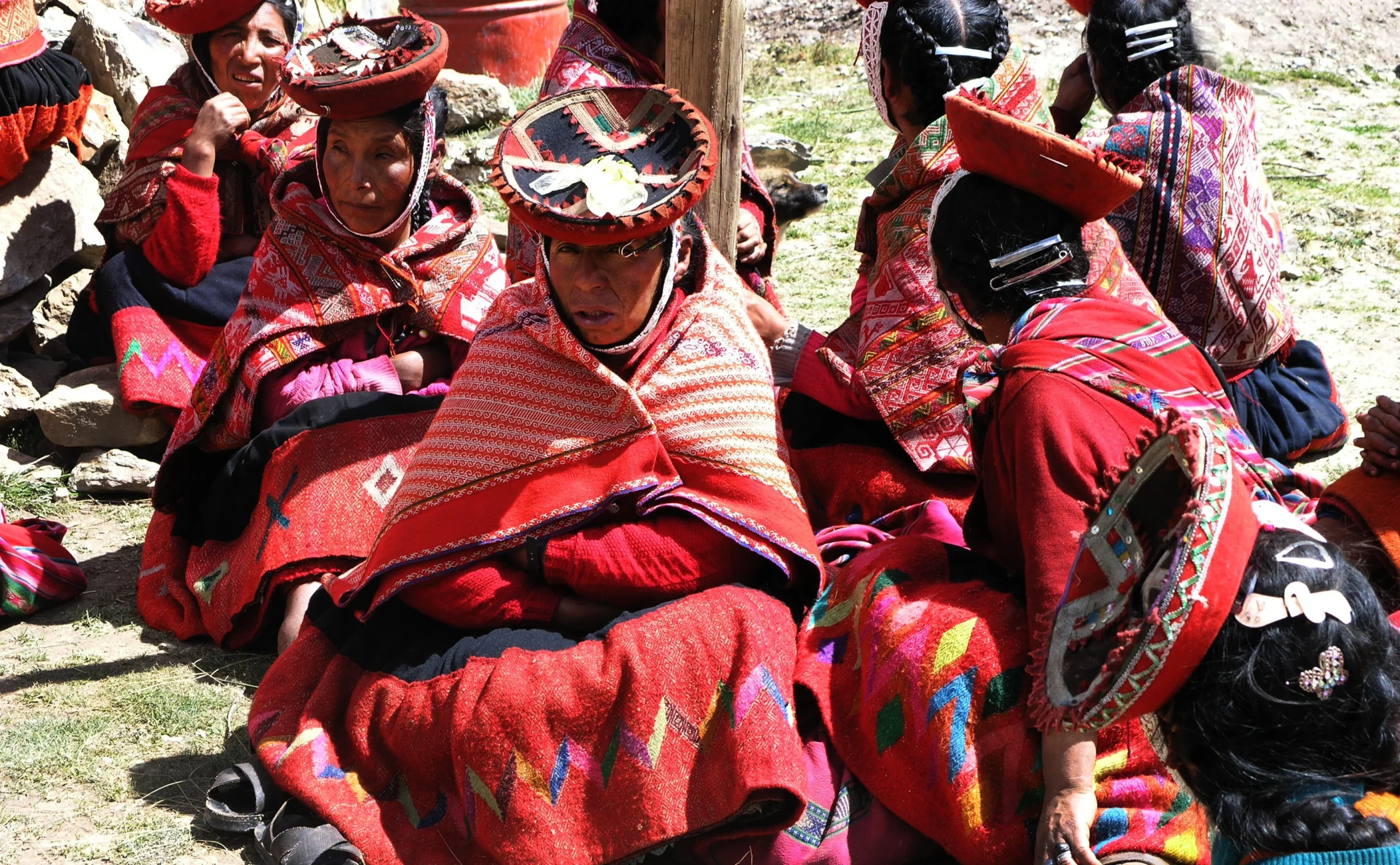
Mujeres con ropa tradicional en Patacancha Ollantaytambo
FAQs About Experiential Tourism in Cusco
1. Is it safe?
Yes! Communities are welcoming and accustomed to visitors. For extra ease, book with responsible tour operators.
2. What languages are spoken?
Spanish and Quechua. Learn basics like “Rimaykullayki” (please) or “Sulpayki” (thank you)—it’s deeply appreciated!
3. Are there vegetarian/vegan options?
Yes! Andean cuisine features quinoa, native potatoes, corn, and beans. Inform dietary needs when booking.
4. What gifts are appropriate?
School supplies, seeds, or basic medicines. Avoid unplanned donations like sweets.
5. How does altitude affect the experience?
Cusco sits at 3,400m, and some communities are higher. Hydrate well and take it slow!
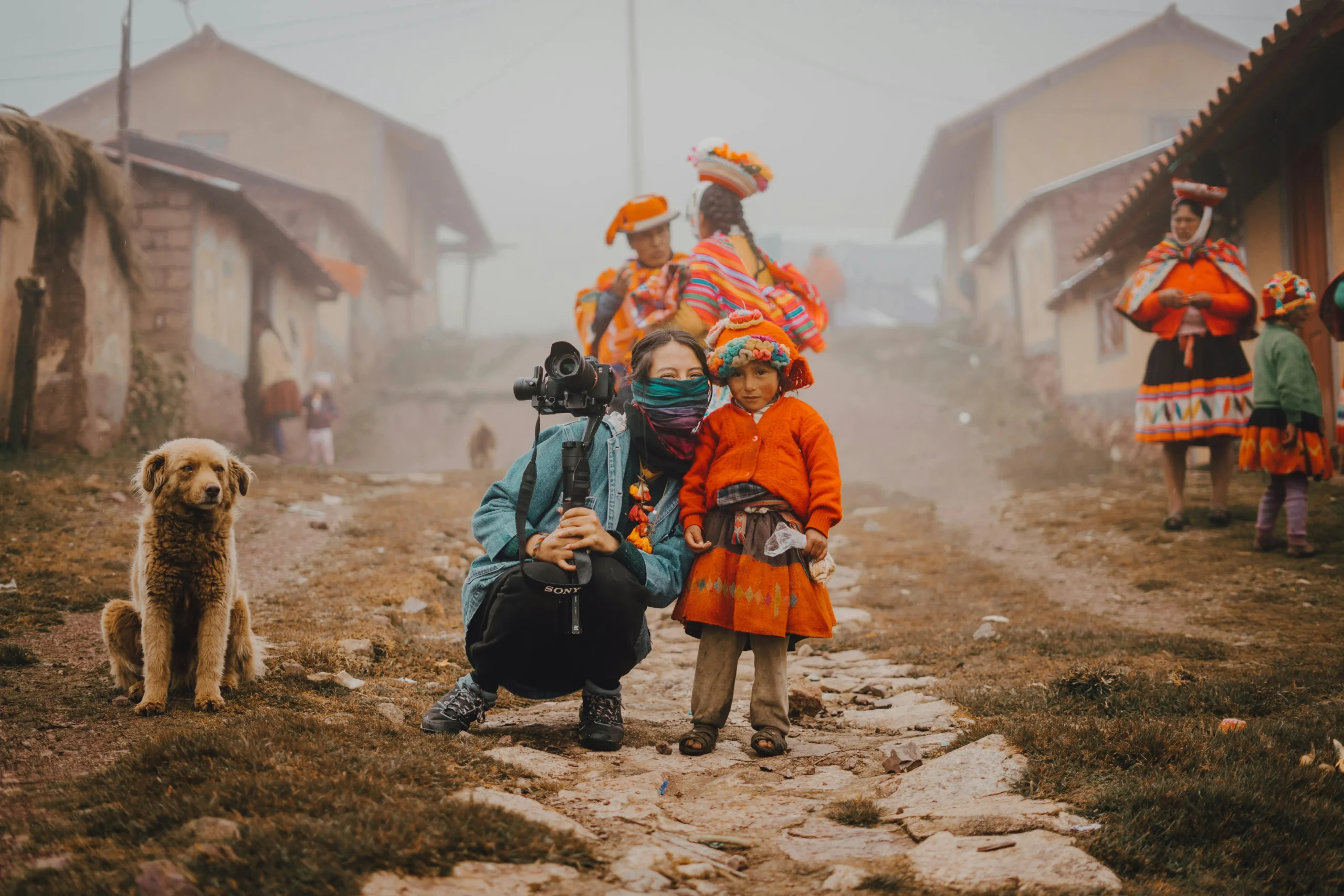
A tourist with a young girl from Ollantaytambo
Experiential tourism in Cusco is more than a trip—it’s a chance to immerse yourself in Andean culture, learn ancient traditions, and directly support local communities. With good preparation and respect, you’ll gain not just new landscapes but a transformed worldview.
Did this article inspire you to explore authentic Andean life? Share it with fellow travelers to promote meaningful tourism! Questions about planning your adventure? Kantu Peru Tours is ready to help design your perfect experience. 🚀

